Content |
|---|
Description:

35,5-38 cm.. length and 480 g. of weight.
The Yellow-naped Parrot (Amazona auropalliata) It has a large size; their forecrown and front of the crown, usually, pale bluish green, sometimes with narrow frontal band yellow that extends to the front of the crown.
back of the crown pale bluish green; lores, cheeks and sides neck, green; nape with broad golden-yellow ban. Upperparts green with some feathers in the the mantle and in the back with blackish edges; rump and uppertail-coverts slightly brighter than the rest of the upperparts. The wing-coverts green but more emerald than upper body; feathers yellow feathers on leading edge of wing in some birds. Outerwebs of the four outer secondaries, bright red as speculum; primaries and secondaries violet blue outerweb and towards tips. Under, the wings are green. Underparts pale green with a slight bluish tinge throat.
Tail green with a wide terminal band brighter yellowish green, red at the base with outerweb of the outer feathers, blue. Bill blue, black tip; bare periophthalmic grey; irises orange; legs grey.
Both sexes are similar. The immature has the nape green with yellow feathers appearing at end of first year; irises brown.
- Yellow-naped Parrot sound.
Description 3 subspecies:
Birds of Bay islands often they treated as parvipes, not as caribaea. Some copies of Guatemalan Pacific show forecrown yellow, but apparently not consistent racial difference.
-
Amazona auropalliata auropalliata
(Lesson,PA, 1842) – Nominal.
-
Amazona auropalliata caribaea
(Lousada, 1989) – Similar to the subespecie parvipes but with olive below and bill paler colored horn (especially lower jaw). usually adults patch yellow triangular in front of the crown. Young birds show little yellow in the head wave nape.
-
Amazona auropalliata parvipes
(Monroe,BL Jr & Howell,TR, 1966) – Less than nominal species, with red feathers on the curve wing , otherwise similar.
Note:
The Amazona auropalliata, It is often considered conspecific with the Amazona ochrocephala and Amazona oratrix.
Habitat:
Video – "Yellow-naped Parrot" |
|---|
The Yellow-naped Parrot inhabits semiarid forests, arid scrubland and savannas (including those of Pinus), openings in deciduous tropical forests and swamps peaceful, evergreen gallery forests and, sometimes, second growth in agricultural areas. Observed to 600 metres in Guatemala and a 700 metres in Honduras. Usually in pairs or small groups, sometimes in larger meetings, but the decline of the population may now obscures large flocks in some areas. They meet at communal roosts.
Reproduction:
Monógama; It maintains the union of couples throughout the year.
It nests in natural cavities in trees, such as holes in old trunks or dead, including pines Nicaragua and Bay islands. breeding season in February Oaxaca and El Salvador; March Roatan. Clutch 2-3 eggs.
In captivity cycle nesting of the Yellow-naped Parrot complete with 29 days of incubation eggs, followed by two months increase of the young in the nest.
Food:
Foods reported include seeds of Cachlospermum, Curatella, Higos Ficus and fruit mature Terminalia. The birds in the Bay islands observed feeding on cones Pinus caribaea, with high seasonal dependence on this resource.
Distribution:
Size of its range (breeding/resident): 580.000 km2
The Yellow-naped Parrot It is confined to Central America. They are distributed in the lowlands Eastern Pacific of Mexico (Oaxaca and Chiapas), Guatemala (a sample taken in Petén but his status there is uncertain), El Salvador (arid lowland tropical zone), Honduras and Nicaragua, to the Northwest of Costa Rica from the south end of Gulf of Nicoya northward. They can also be seen in the Caribbean slope of Honduras and in the Mosquito Coast from Honduras, as well as in the neighboring area of northeast Nicaragua. found in Roatan and Guanaja, in the Bay islands but absent in Utila.
Resident. Apparently uncommon in Oaxaca and rare and declining in Costa Rica. Birds observed in the Sula Valley, Honduras, previously attributed to this species but now included within the species Yellow-headed Parrot.
Formerly common and locally abundant, but probably now declining throughout its entire range due to conversion of habitat for agricultural uses and its capture for trade local and international. Not yet considered endangered, but its long-term status is uncertain if its population decline continues.
Although Guanaja reasonable numbers remain, the species inhabiting the Bay islands (caribaea), It is in serious decline due to capture for export (practically 100% of hatchlings are caught each year); also at risk from tourism development, especially in Roatan.
Distribution 3 subspecies:
-
Amazona auropalliata auropalliata
(Lesson,PA, 1842) – Nominal. Pacific Coast of Central America, from Oaxaca, Mexico, to the Northwest of Costa Rica.
-
Amazona auropalliata caribaea
(Lousada, 1989) – Bay islands, Honduras.
-
Amazona auropalliata parvipes
(Monroe,BL Jr & Howell,TR, 1966) – Mosquito Coast in Honduras and northeast of Nicaragua.
Conservation:
State of conservation ⓘ |
||
|---|---|---|
 Vulnerable ⓘ (UICN)ⓘ
Vulnerable ⓘ (UICN)ⓘ
| ||
• Current category of the Red List of the UICN: Vulnerable.
• Population trend: Decreasing.
• Population size : 20000-49999.
Rationale for the Red List category
-
This species has been uploaded to Vulnerable because information on levels exploitation and habitat loss, and trends of the local population, They suggest that the species is suffering at least one rapid population decline. In fact, the rate of decline can be very rapid; However, Additional data are needed to confirm this, in which case the species may qualify for elevation In danger of extinction.
Justification of the population
-
Partners in Flight estimated that the population in number of less than 50.000 individuals (A. Punjabi in some. 2008), so it is placed in the band 20.000 to 49.999 individuals on freedom.
Justification of trend
-
It is suspected that the population is in rapid decline due to the continuous habitat destruction and unsustainable levels of hunting, a suspicion that is supported by the observations of trends of the local population.
The Yellow-naped Parrot in captivity:
The populations of the Amazon nuquigualda have suffered strong pressure by national and international trade (Ridgely, 1981, Iñigo- Elias and Ramos, 1992). There is now an illegal heavy traffic this species, both for domestic and international trade, Parrot's being seized in the Mexico-Texas border, with 648 copies confiscated during 1990-1993 (Gobbi, et to the., 1996).
protected by CITES Appendix I species (Endangered species, which they are or may be affected by international trade. Only trade in the species included in Appendix I authorized in exceptional circumstances, and it must not have a primarily commercial purpose.)
Each captive specimen of this species which is capable of reproducing, must be placed in a well-managed captive breeding program and not sold as a pet, in order to ensure its long-term survival.
Alternative names:
– Yellow naped Parrot, Yellow-naped Amazon, Yellow-naped Parrot, Yellow-naped Parrot (incl. ssp. caribaea, parvipes),
(English).
– Amazone à nuque d’or, Amazone à nuque jaune, Amazone verte à nuque jaune (French).
– Gelbnackenamazone (German).
– Papagaio-de-nuca-amarela (Portuguese).
– Amazona nuquigualda, Lora de Nacu Amarilla, Lora de nuca amarilla, Lora nuca amarilla, Loro Nuca Amarilla, loro nuca-amarilla, Loro Nuquiamarillo (español).
– Lora de nuca amarilla (Costa Rica).
– Lora nuca amarilla (Honduras).
– loro nuca amarilla, loro nuca-amarilla, Loro Nuquiamarillo (Mexico).
– Loro Nuquiamarillo (Nicaragua).
scientific classification:

– Order: Psittaciformes
– Family: Psittacidae
– Genus: Amazona
– Scientific name: Amazona auropalliata
– Citation: (Lesson, 1842)
– Protonimo: Psittacus auropalliatus
Images Yellow-naped Parrot:
Sources:
– Avibase
– Parrots of the World – Forshaw Joseph M
– Parrots A Guide to the Parrots of the World – Tony Juniper & Mike Parr
– Birdlife
– Photos:
(1) – A Yellow-naped Amazon at Jurong Bird Park, Singapore By Michael Gwyther-Jones from UK (Flickr) [CC BY 2.0], via Wikimedia Commons
(2) – Yellow-naped Parrot or Yellow-naped Amazon (Amazona auropalliata) at Gatorland By Josh Hallett [CC BY 2.0], via Wikimedia Commons
(3) – Yellow-naped Parrot, also known as Yellow-naped Amazon, in an aviary at Leeds Castle, Kent, England By Martin Pettitt [CC BY 2.0], via Wikimedia Commons
(4) – Yellow-naped Parrot or Yellow-naped Amazon (Amazona auropalliata) in captivity. Upper body By whiskymac (Flickr) [CC BY 2.0], via Wikimedia Commons
(5) – Yellow-naped Amazon (also called Yellow-naped Parrot) in a cage. A blue colour mutant variety bred in aviculture By Ruth Rogers (originally posted to Flickr as Blue Amazon) [CC BY 2.0], via Wikimedia Commons
(6) – Yellow-naped amazon by Ecocientificos 2 IE PIO XII – Flickr
(7) – Roatán-Gelbnackenamazone (Amazona auropalliata caribaea) By Martingloor (Own work) [CC BY-SA 4.0], via Wikimedia Commons
(8) – Yellow-naped Parrot or Yellow-naped Amazon (Amazona auropalliata) By Just chaos [CC BY 2.0], via Wikimedia Commons
(9) – Yellow naped Amazon parrot Matt edmonds at the English language Wikipedia [GFDL or CC-BY-SA-3.0], via Wikimedia Commons
(10) – Amazona auropalliata – The zoology of the voyage of H.M.S. Sulphur :. London :Smith, Elder,1844 [i.e. 1843-1846]. by Biodiversity Heritage Library – Flickr
– Sounds: Marcio Martinez, XC239997. accessible www.xeno-canto.org/239997
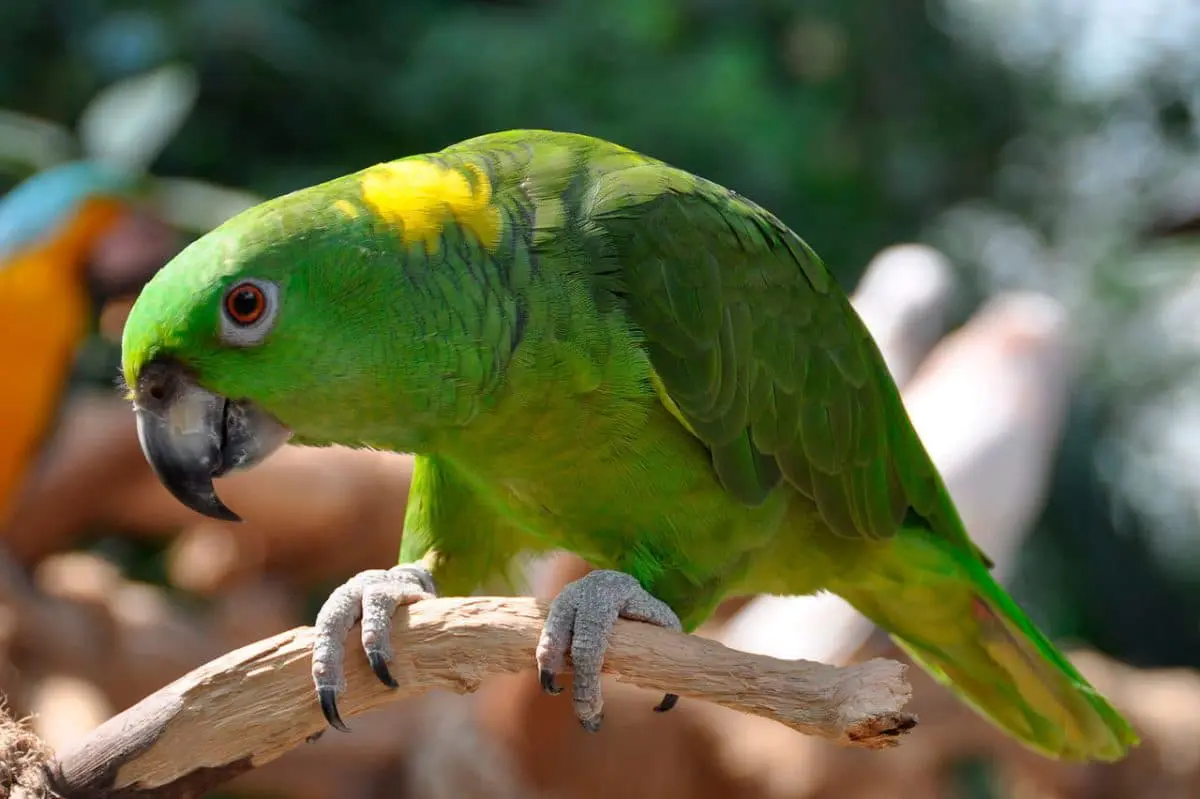
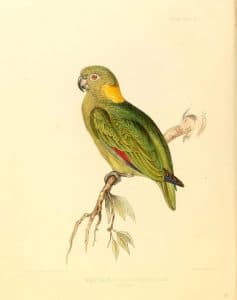

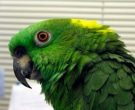
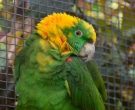
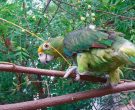
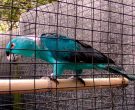
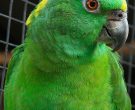
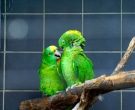
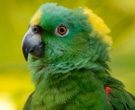

👍